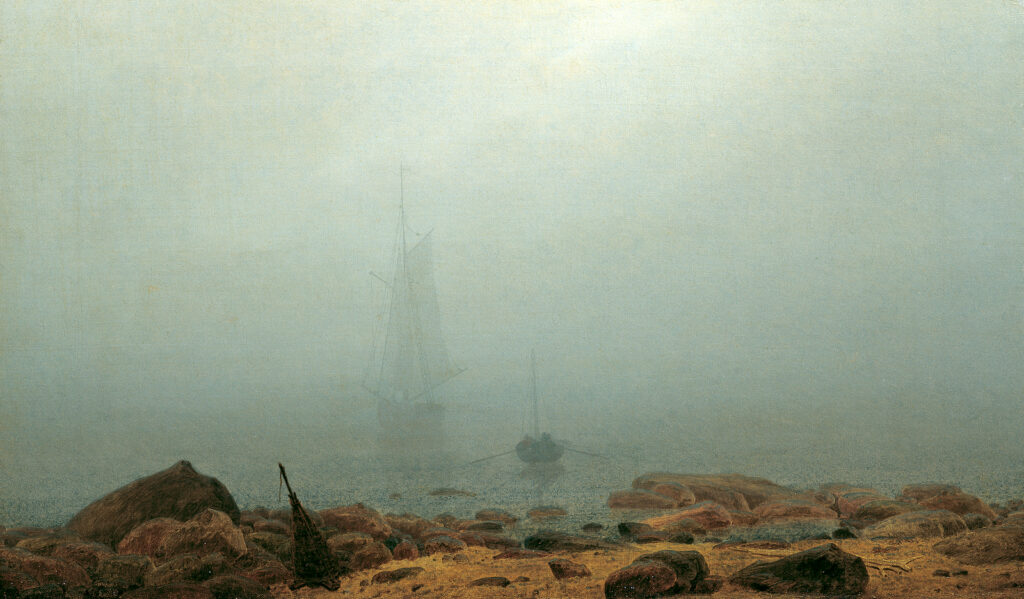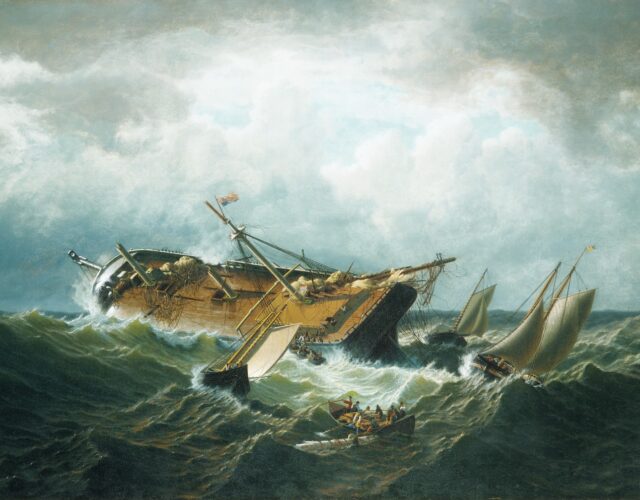In 1899, while embarking on a familiar route to Boston, the crew of the schooner Edward Rich became disoriented in heavy fog. The ship, laden with paving blocks, crashed into the rocks of a breakwater, and its smashed oaken hull quickly filled with water. The crew, still within view of shore, left the ruined ship to the waves.
The wreck is significant because it was ordinary. Between 1890 and 1900 more than a thousand ships like the Edward Rich sank off foggy North American coasts. Lighthouses, sometimes fitted with bells and sirens to warn ships in the gloom, could only do so much, and they did nothing to protect ships from underwater obstacles or drifting icebergs. Nor were there accurate maps of the seafloor to help pilots navigate blind. A ship in fog tempted fate.
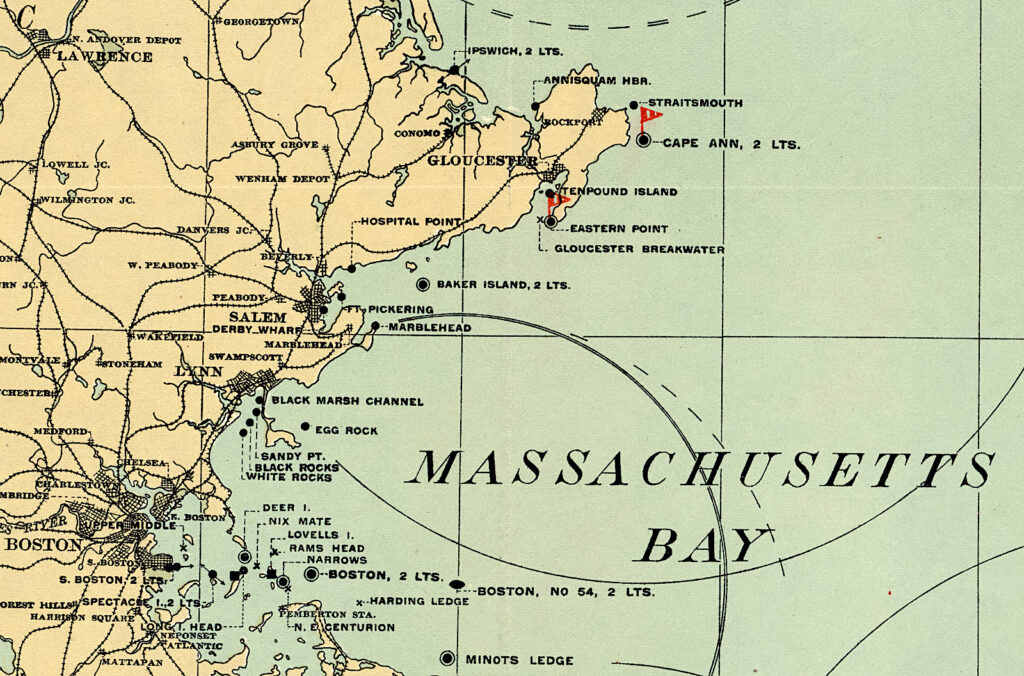
In 1901 a group of engineers formed the Submarine Signal Company (SSC) to address the fog problem. Their plan, proposed by the American Lighthouse Board 12 years earlier, was to create a system of underwater bells to guide ships around the most dangerous rocks, reefs, and shallows. Ships outfitted with underwater microphones—called hydrophones—would listen for the bong of the bells and follow the sound to safe harbor. Because sound travels farther in water than in air, the ringing of the heavy underwater bells would have a much greater range than anything projected from a lighthouse.
By 1912 the SSC had installed more than a hundred bell arrays along coastlines in North America, Europe, and Asia. Business was steady but not booming. Then on April 14, 1912, a gigantic steamer making its maiden voyage across the Atlantic slammed into an iceberg and sank, killing more than 1,500 people and turning the public’s attention to marine safety. Within two years the SSC would possess a technology that could prevent another such disaster—a device that used underwater echoes to measure distance. Though the SSC was slow to realize the device’s potential, the invention would eventually transform marine warfare and our understanding of the ocean.
It was a lucky accident that the bullheaded inventor the SSC chose to build the device knew more about radio than he knew about the sea.
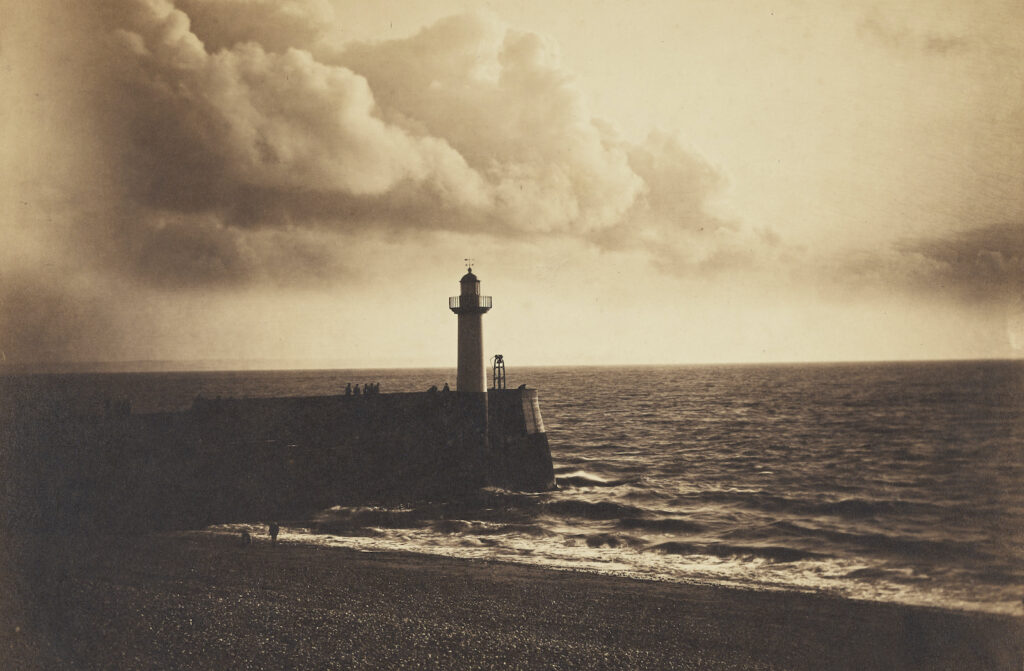
Four days before the Titanic disaster SSC executive Harold Fay ran into an old acquaintance, Reginald Aubrey Fessenden, at a Boston train station. Fay had met the imposing, red-haired Canadian a few years before at Bell Labs, where Fessenden had come looking for a more powerful transmitter for his experiments in “wireless telephony”—what we would call radio. Fessenden was a well-known inventor by then, having been the first to successfully transmit voices using radio waves and the first to achieve a two-way transatlantic broadcast in 1906.
Fay thought Fessenden might solve a problem the SSC was having with its bell system, and he invited the engineer to come by the company’s offices the following morning. SSC’s underwater bells worked well enough, but the hydrophones—based on microphones designed by Thomas Edison—needed improvement. They captured too wide a range of frequencies, with the sound of the bells masked by the slop of water and the thrum of the ship’s engine. Often a ship would have to come to a complete stop for the hydrophone operator to hear the bell and reckon the way.
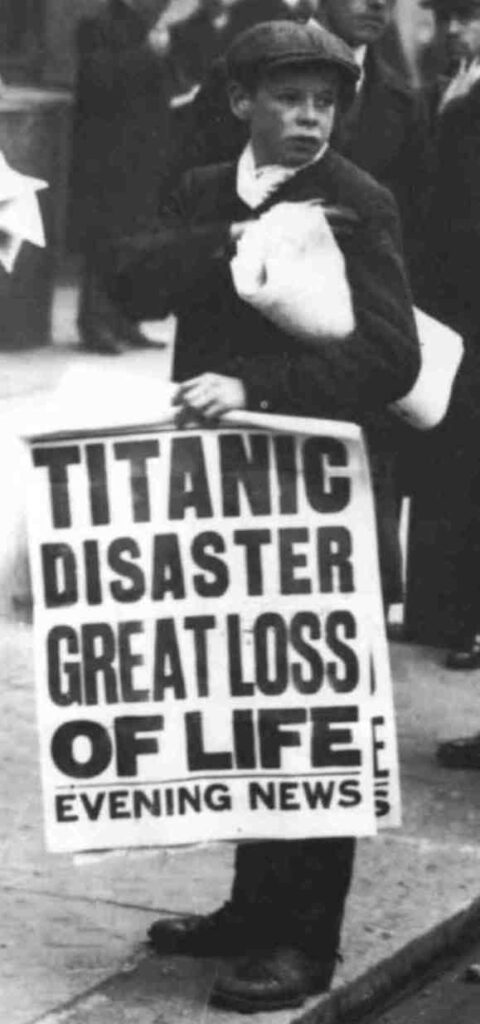
While drawn to the spotlight the Titanic disaster had focused on marine safety, Fessenden was leery of business partners, who always seemed to meddle with his inventions. He wanted $10,000 for the job, a significant sum. He also declared that instead of improving the hydrophone he wanted to make a better “bell,” one that would produce a continuous tone, which he suspected would be easier to hear underwater than a mere bong.
Fay dismissed Fessenden’s preposterous fee and his pitch for a new transmitter. The SSC was committed to improving the hydrophone only. Uncharacteristically, Fessenden compromised. As his wife and biographer, Helen, would later explain, he couldn’t resist the challenge of outwitting “those soundless perils of rock and shoal, of iceberg and fog, dumb agencies of Nature to menace and destroy.” Also, he needed a job.
Born in French-speaking Quebec in 1866 to a family of avid British loyalists, Fessenden landed his first scientific job at age 20 with Thomas Edison at the inventor’s New York City dynamo and electric motor factory. Within a year Fessenden had moved to Edison’s new laboratory in West Orange, New Jersey, where he invented a fire-retardant coating for electrical wires that earned him a promotion to chief chemist. But two years later he found himself jobless when Edison ran into financial trouble. While Fessenden would idolize Edison for the rest of his life, the episode instilled in him a mistrust of private enterprise that only intensified in subsequent years. “In Big Business there appears to be increasing aridity, bureaucracy, and stultifying sacrifice of initiative and above all fear,” he later grumbled.
After a stint at Westinghouse working on dynamos and one as a professor of electrical engineering, Fessenden was asked by the U.S. Weather Bureau to take on the then-unproven technology of wireless communication, the 5G of the previous century. He, Helen, and their son moved to an island in the Potomac River where Fessenden demonstrated that voices could be transmitted over wireless through amplitude modulation, better known now as AM.
In 1902, fed up with what he saw as attempts by the Weather Bureau to take over his patents, Fessenden resigned and joined up with a pair of Pittsburgh millionaires to make wireless signaling commercially viable. Despite technical progress that relationship also soured. In 1910, still unwilling to compromise with his business partners, Fessenden was fired.
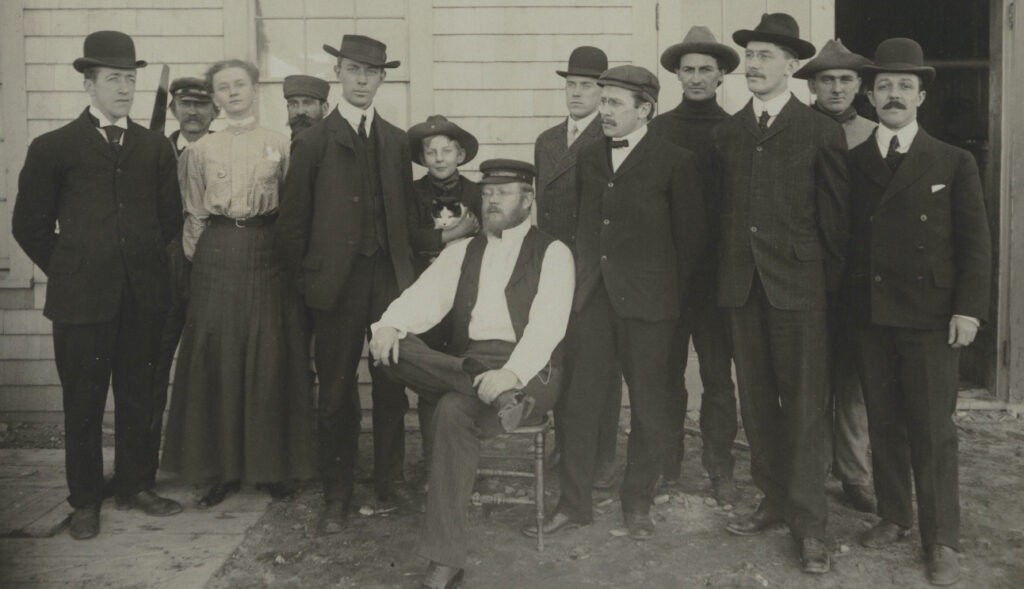
“Despite Fessenden’s extraordinary technological imagination, the knack of comprehending other people’s perspectives often eluded him,” wrote historian Gary L. Frost. Helen’s perspective on the man is more revealing: “He believed his judgement to be wiser than most and having made a decision, with every ounce of his energy he strove to make that decision stick.” Part ego, part mulishness, it wouldn’t be the last time Fessenden’s career suffered because of his personality.
The fallout from the Pittsburgh venture left Fessenden effectively barred from working in wireless. He found himself bumming around, uninspired and endlessly defending his patents. Then his old acquaintance Harold Fay asked if he wanted to work on underwater acoustics, and everyone was talking about the Titanic.
At the SSC, Fessenden proved as obstinate as ever. He signed a contract with Fay for an improved hydrophone but returned three months later without one, at least not exactly. Instead he delivered a new kind of transducer that could both send and receive sound. Fessenden had found a loophole in his employer’s instructions: he had simultaneously created a receiver, as promised, and a transmitter—a device, he argued, with many potential applications. He would eventually dub it the Fessenden oscillator, lest anyone forget its origin.
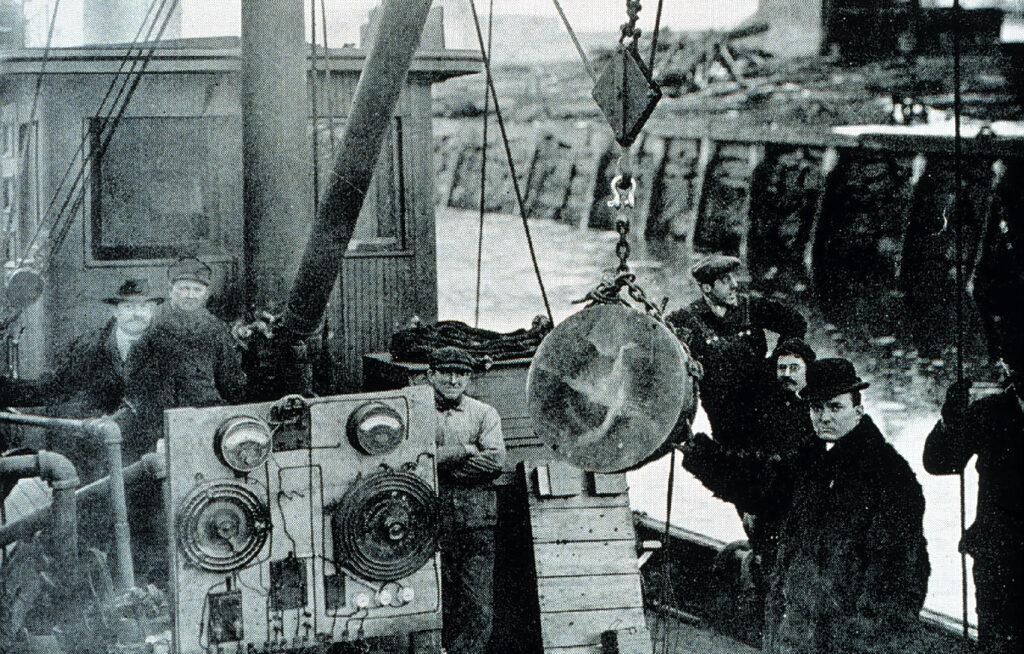
The oscillator itself looked like a big loudspeaker, which could be attached to the hull of a ship or lowered directly into the water. Within a 1,200-pound steel cylinder was a hollow copper tube wrapped tightly with wires. When an AC current ran through the wires, the tube vibrated rapidly. A steel plate, or diaphragm, connected to one end of the tube vibrated at the same frequency and produced a loud ping. The system also worked in reverse as a kind of focused microphone, with the device tuned to pick out the same frequencies it produced. The technique used to tune the oscillator’s coils was directly inspired by Fessenden’s earlier experiments on tuning radio receivers.
He had spent his career transmitting sound over the air. Now he would do it underwater.
Two years after presenting the SSC with the oscillator, Fessenden found himself back home in Canada, boarding the cutter Miami in Halifax Harbor. The oscillator had proved successful in sending and receiving Morse code between tugboats in testing done in Boston Harbor. Now Fessenden and two SSC engineers wanted to test its echo-ranging capabilities on the real thing: icebergs. Fessenden, not trusting anyone else to carry out the tests, insisted on joining the expedition.
The Miami, a “tubby little boat,” as he described it, steamed for the ice floes around the Grand Banks of Newfoundland on April 7, 1914. The boat was too small for the long-limbed Fessenden, who kept banging his head on things. In a letter to Helen he complained that by the time he saw the first of the ice fields on April 14, he was all out of “stogies” and keen to get on with the tests.
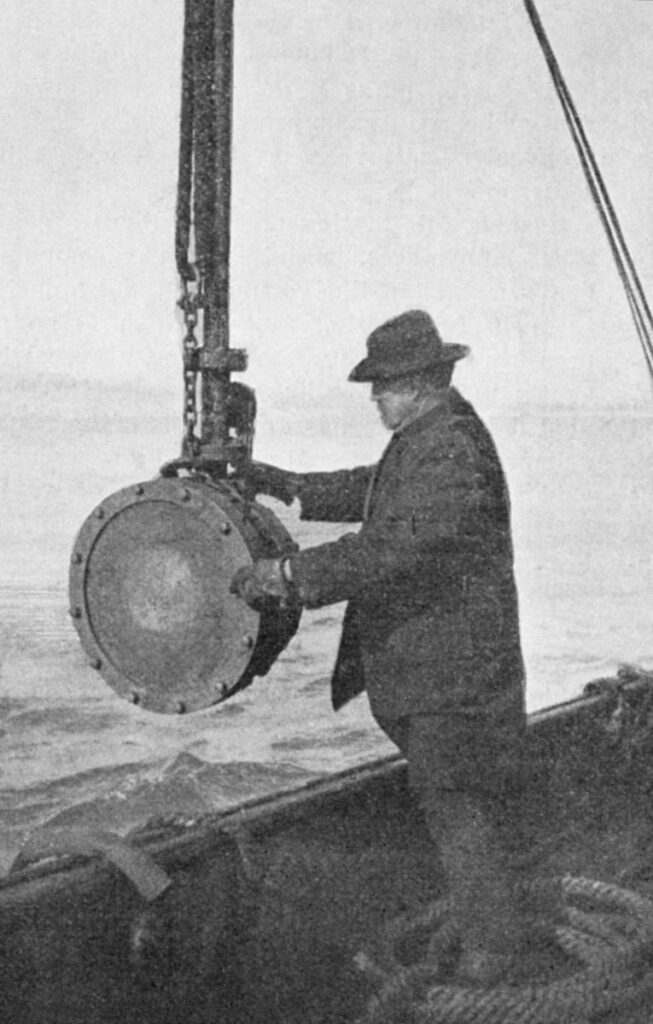
On April 27 the Miami neared an iceberg that loomed 130 feet above the ocean’s surface. The captain sounded the ship’s whistle while Fessenden and one of the SSC engineers listened by the rail for an echo. But the wall of ice was silent. In fog it would be invisible.
The pair hoisted the oscillator into the frigid water and dropped it to a depth of 10 feet. Could they use sound to see the ice? Could they do it well enough that a steamer with 2,400 souls aboard could trust the results? Fessenden took out his stopwatch. Ready, set . . . .
The ping sped through the frigid seawater at about 4,800 feet per second: at 540 hertz it was about the same pitch as a dial tone—but loud. The sound waves hit the iceberg, refracting at different angles. A little more than a second later the echo returned to the oscillator, cuing Fessenden to stop the watch. Distance equals speed multiplied by time. Echo ranging—sonar—was born.
The next morning the crew tried another experiment and pointed the oscillator at the seafloor to take an echo sounding, a measurement of depth. In the relatively shallow water the echoes returned almost too quickly to record accurately with a stopwatch, but the signals were strong and clear, loud enough for the crew below deck to hear the echo return. The implications were remarkable: the centuries-old practice of laboriously and inaccurately taking depth measurements by lowering weights to the seafloor was on its way out.
In addition to their value for navigation, echo ranging and echo sounding would eventually prove essential to submarine warfare, oceanography, and commercial fishing. The accuracy and efficiency afforded by echo sounding in particular would make possible detailed mapping of the seafloor, revealing fracture zones and seamounts, abyssal plains and world-girdling volcanic ridges, in what was once thought to be a flat, featureless plain. These bathymetric maps would directly inform the plate-tectonics revolution in the 1960s, and even today echo sounding remains a source of new discoveries.
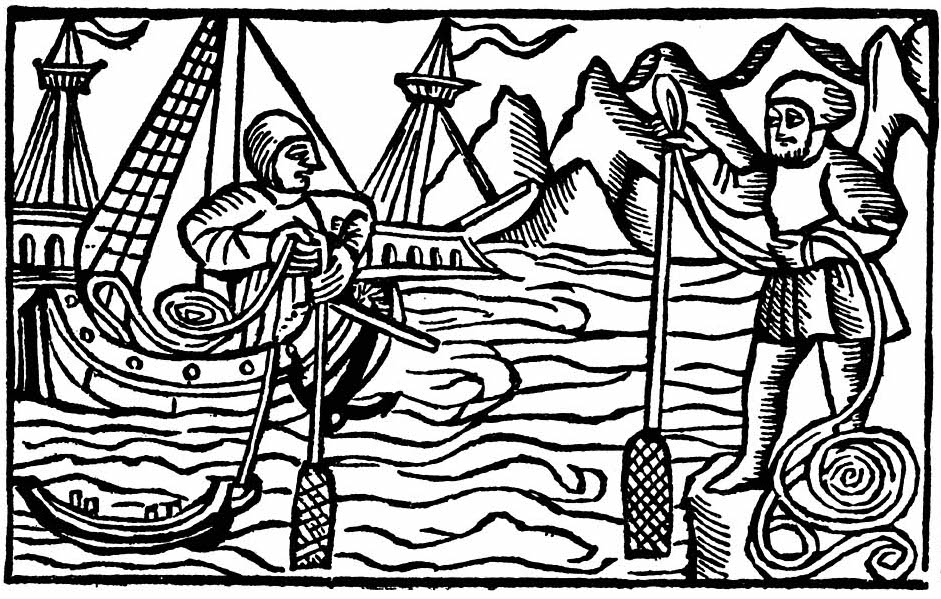
But to Fessenden’s chagrin the SSC did not pursue those capabilities, at least not immediately. In the buildup to World War I the company had success marketing the device to the world’s militaries but only as an underwater signaling device, not an echo ranger or echo sounder. Though the company’s stock price more than doubled, Fessenden, who had set out to prevent a disaster like the one that befell the Titanic, was furious. “My relations with the company were of the most pleasant character until shortly before the declaration of war,” he wrote.
Most infuriating to the British loyalist, the SSC marketed the oscillator to both the Allies and the Central powers until the United States entered the war in 1917. SSC chiefs had their own gripes. On a sales trip to Britain, Fessenden secretly tried to sell the Royal Navy on the oscillator’s ranging capabilities despite orders not to.
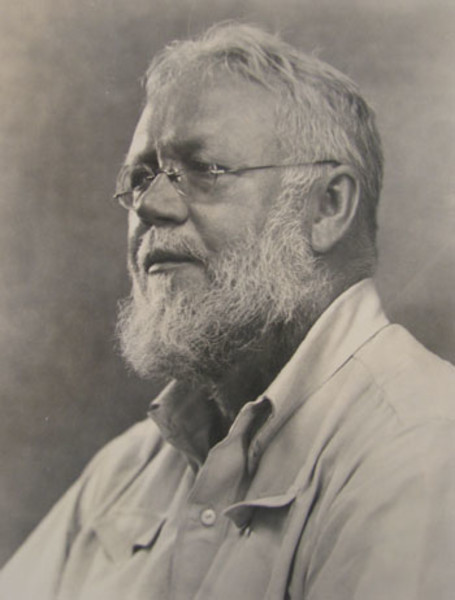
Though nearly fired for going rogue in Britain, Fessenden continued to promote the echo-ranging capabilities of his oscillator. Under the oversight of the newly formed Submarine Board, which administered the wartime development of submarine technology, his arrogant attitude and tendency to sneer at corporate politics once again made him enemies. After the signing of the Treaty of Versailles in 1919, he was pushed out of the SSC. And in 1923, with Fessenden watching from the sidelines, the SSC finally began promoting the oscillator as the “Fathometer,” an echo-sounding device.
Wealthy from the success of his oscillator and the favorable conclusion of several fights over patent rights, the graying Fessenden turned to writing, philosophizing, and perpetuating conspiracy theories. He declared that an international group named the Research Council was scheming to gain control of the inventions made by individual geniuses such as himself. He proposed a racist theory about the genetic or “Mendelian” origins of inventiveness, one that favored particular “ethnic” factors, such as being Anglo-Saxon—again, like himself. He also wrote a book speculating on the location of the lost city of Atlantis.
In 1928 Fessenden and his wife bought a house in Bermuda, where they had met years before. He died there in 1932, and for the next eight years Helen worked on her biography of him, Fessenden: Builder of Tomorrows. Published in 1940, her book did much to preserve the memory (and the acrimony) of her often-snubbed husband. His legacy includes hundreds of patents, but he’s remembered most often for his work in radio. The Fessenden oscillator lies somewhere just beneath the surface.
